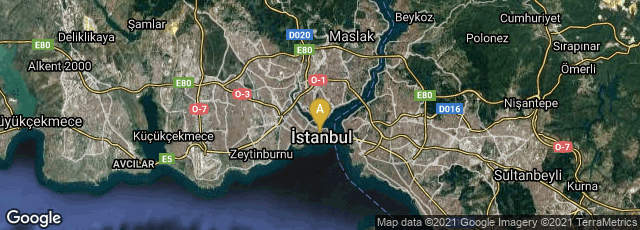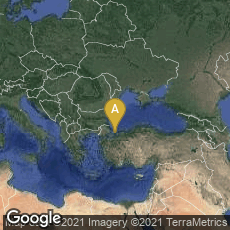

On October 29, 1998 the Archimedes Palimpsest, a 10th-century copy written in Constantinople of an otherwise unknown work of Archimedes of Syracuse and other authors, palimpsested with Christian religious texts by 13th-century monks, was sold at auction by Christie's in New York for $2,000,000 to antiquarian bookseller Simon Finch acting for an anonymous American private collector. The Archimedes Palimpsest had disappeared in the 1910s or 1920s and ended up in a French collection. Its consignor at the auction, Anne Guersan, said that her father, Marie Louis Sirieux, acquired the book from in Constantinople in the 1920s. In 1932, her father-in-law Solomon Guerson, a French Jewish merchant in rare carpets and antique tapestries working in Paris, tried selling the palimpsest, and a manuscript curator identified a leaf as Folio 57 of the Archimedes Manuscript. It seems Guerson used leaves from his manuscripts to make elaborate forgeries. Not recognizing or appreciating the significance of the Archimedes undertext, sometime after 1938 Guerson possibly attempted to enhance the religious value of the palimpsest by painting on four of its leaves forgeries of portraits of the Four Evangelists that resembled images he had seen in Greek manuscripts at the Bibliothèque nationale de France. The paintings were forged after 1938 as they contain a synthetic pigment called phlalocyanine green, which was only available after that date.
At some time in the distant past the palimpsest was in the library of the monastery of Mar Saba, near Jerusalem, a monastery acquired by the Greek Orthodox Patriarchate of Jerusalem in 1625. Before the auction the Greek Orthodox Patriarchate of Jerusalem contended that the palimpsest had been stolen from one of its monasteries in Constantinople in the 1920s. In 1998, prior to the auction, ownership of the palimpsest was litigated in federal court in New York in the case of the Greek Orthodox Patriarchate of Jerusalem v. Christie's, Inc. The judge ruled in favor of Anne Guerson and Christie's.
The palimpsest seems to have first gained the attention of scholars when the Biblical scholar Constantin von Tischendorf visited Constantinople in the 1840s, and took a page of it. This page is preserved in Cambridge University Library. In 1906 the historian of mathematics Johan Heiberg studied the manuscript in Constantinople, realized that the undertext was Archimedes, and that the palimpsest included works otherwise lost. Heiberg took photographs, from which he produced transcriptions published between 1910 and 1915 in his edition of the complete works of Archimedes. Shortly thereafter Archimedes' Greek text was translated into English by historian of mathematics T. L. Heath.
Because the erasure during the palimpsesting process was incomplete, from 1998 to 2008 scientific and scholarly work using digital image processing produced by ultraviolet, infrared, visible and raking light, and X-ray has made Archimedes' undertext legible. The most remarkable work in the palimpsest is Archimedes' The Method, of which the palimpsest contains the only known copy.
"At the Walters Art Museum in Baltimore, the palimpsest was the subject of an extensive imaging study from 1999 to 2008, and conservation (as it had suffered considerably from mold). This was directed by Dr. Will Noel, curator of manuscripts at the Walters Art Museum, and managed by Michael B. Toth of R.B. Toth Associates, with Dr. Abigail Quandt performing the conservation of the manuscript.
"A team of imaging scientists including Dr. Roger L. Easton, Jr. from the Rochester Institute of Technology, Dr. William A. Christens-Barry from Equipoise Imaging, and Dr. Keith Knox (then with Boeing LTS, now with USAF Research Laboratory) used computer processing of digital images from various spectral bands, including ultraviolet, visible, and infrared wavelengths to reveal most of the underlying text, including of Archimedes. After imaging and digitally processing the entire palimpsest in three spectral bands prior to 2006, in 2007 they reimaged the entire palimpsest in 12 spectral bands, plus raking light: UV: 365 nanometers; Visible Light: 445, 470, 505, 530, 570, 617, and 625 nm; Infrared: 700, 735, and 870 nm; and Raking Light: 910 and 470 nm. The team digitally processed these images to reveal more of the underlying text with pseudocolor. They also digitized the original Heiberg images. Dr. Reviel Netz of Stanford Universityand Nigel Wilson have produced a diplomatic transcription of the text, filling in gaps in Heiberg's account with these images.
"Sometime after 1938, one owner of the manuscript forged four Byzantine-style religious images in the manuscript in an effort to increase its value. It appeared that these had rendered the underlying text forever illegible. However, in May 2005, highly focused X-rays produced at the Stanford Linear Accelerator Center in Menlo Park, California, were used by Drs. Uwe Bergman and Bob Morton to begin deciphering the parts of the 174-page text that had not yet been revealed. The production of X-ray fluorescence was described by Keith Hodgson, director of SSRL: "Synchrotron light is created when electrons traveling near the speed of light take a curved path around a storage ring—emitting electromagnetic light in X-ray through infrared wavelengths. The resulting light beam has characteristics that make it ideal for revealing the intricate architecture and utility of many kinds of matter—in this case, the previously hidden work of one of the founding fathers of all science."
"In April 2007, it was announced that a new text had been found in the palimpsest, which was a commentary on the work of Aristotle attributed to Alexander of Aphrodisias. Most of this text was recovered in early 2009 by applying principal component analysis to the three color bands (red, green, and blue) of fluorescent light generated by ultraviolet illumination. Dr. Will Noel said in an interview: "You start thinking striking one palimpsest is gold, and striking two is utterly astonishing. But then something even more extraordinary happened." This referred to the previous discovery of a text by Hypereides, an Athenian politician from the fourth century BC, which has also been found within the palimpsest. It is from his speech Against Diondas, and was published in 2008 in the German scholarly magazine Zeitschrift für Papyrologie und Epigraphik, vol. 165, becoming the first new text from the palimpsest to be published in a scholarly journal" (Wikipedia article on Archimedes Palimpsest, accessed 01-26-2014).
In addition to the website and digital editions, thanks to the generosity of its owner, the Archimedes Palimpsest was published in one of the finest scholarly and most physically attractive, large and impressive sets of printed books ever issued on an historical manuscript: Netz, Noel, Tchernetska & Wilson eds., The Archimedes Palimpsest. Volume I: Catalogue and Commentary; Volume II: Images and Transcriptions. Cambridge & Baltimore: Cambridge University Press for The Walters Art Museum, 2011. The set was designed by Jerry Kelly.
A popular account is Netz, Reviel & Noel, William, The Archimedes Codex. How a Medieval Prayer Book is Revealing the true Genius of Antiquity's Greatest Scientist (2007).
Scans of the entire palimpsest are freely available at www.archimedespalimpsest.net.